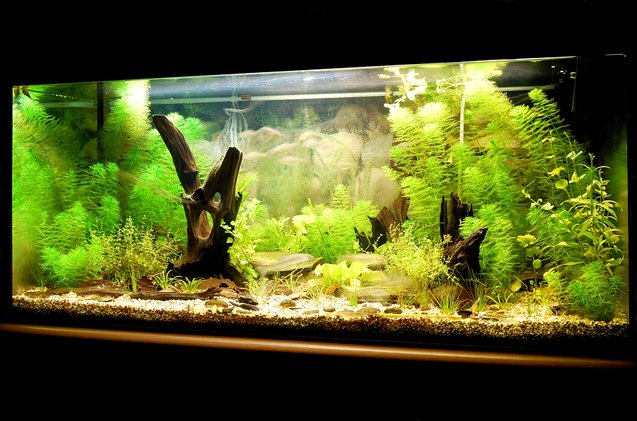Biotope Tanks: What Are They and How Do You Cultivate One?

When you first decide to cultivate a home aquarium you need to think about what kind of tank you want to cultivate. Your main options are either freshwater or saltwater, but both of these categories can be divided into smaller categories. Saltwater tanks, for example, can be traditional marine tanks, reef tanks, or even nano marine tanks. Freshwater tanks can be catered to a variety of natural freshwater habitats called biotopes.
What is a Biotope Tank?
A biotope tank is simply a tank that has been set up to mimic a specific natural environment. The tank is decorated with the same elements found in that natural environment and the water conditions match the natural conditions of that environment. An example of a biotope tank is a Lake Malawi biotope tank. This type of biotope tank would be set up to imitate the natural environment found in Lake Malawi, one of the African Great Lakes that is part of the East African Rift system. This tank would be maintained at a pH between 7.8 and 8.6 with a water hardness between 6 and 10 dH. The temperature would be kept between 72°F and 82°F and it would be stocked with species native to Lake Malawi like Mbuna and Peacock cichlids.
Tips for Keeping a Biotope Tank
When it comes to keeping a biotope tank you can be as creative as you like. Biotope tanks can be catered to more general environments (like the Amazon River Basin or a freshwater stream) or they can be very specific (like a Lake Malawi or mangrove swamp tank). The key to success with biotope tanks is to do your research ahead of time. Learn as much as you can about the environment you plan to mimic in your tank and be sure that you understand the proper water chemistry for the tank. You will need to think about things like water temperature, water hardness, pH and salinity. You should also consider how much flow the water in your tank should have – a freshwater stream tank, for example, will have a higher flow rate than a pond or lake environment.
Once you’ve decided on a biotope to mimic you also need to think about how you will decorate your tank and what kind of fish you will use to stock it. The best way to stock a biotope tank is to use species that are native to the environment you are trying to mimic. For example, you would expect to see brackish species of fish in a Florida mangrove swamp tank. In a Lake Tanganyika biotope tank you would expect to see various cichlids. In addition to thinking about the fish you want to keep in your biotope tank, do not forget about plants and other decorations. Your goal is to make your biotope tank look and act as much like the natural environment you are mimicking as possible.
If you are an experienced aquarium hobbyist looking for a new challenge, a biotope tank might be a good option. Biotope tanks can also work for beginning aquarium hobbyists because they provide concrete requirements for water chemistry that can serve as a guide for inexperienced aquarium owners.

Kate Barrington is the loving owner of two cats (Bagel and Munchkin) and a noisy herd of guinea pigs. Having grown up with golden retrievers, Kate has a great deal of experience with dogs but labels herself a lover of all pets. Having received a Bachelor's degree in English, Kate has combined her love for pets and her passion for writing to create her own freelance writing business, specializing in the pet niche.
More by Kate Barrington























